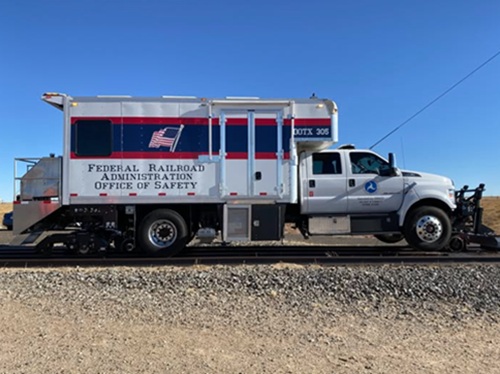The Federal Highway Administration recently issued $110 million in grants to 19 wildlife crossing projects in 17 states, including four projects overseen by Native American tribes.
[Above photo by the Arizona DOT]
According to a statement, FHWA said its data indicates there are more than one million wildlife vehicle collisions in the United States annually, with wildlife-vehicle collisions involving large animals resulting in approximately 200 human fatalities and 26,000 injuries to drivers and their passengers each year.
Those collisions also cost the public more than $10 billion annually, according to FHWA; a figure that includes the total economic costs resulting from wildlife crashes, such as loss of income, medical costs, property damage, and more.
[Editor’s note: The video below shows how wildlife crossings also helps preserve the animal populations in rural areas of the country.]
This is the first round of funding from the five-year Wildlife Crossings Pilot Program, a $350 million program created by the Infrastructure Investment and Jobs Act.
Projects selected for grants in this round of funding include:
- The Arizona Department of Transportation will receive $24 million for the Interstate-17 (I-17) Munds Park to Kelly Canyon Wildlife Overpass Project. The project includes nearly 17 miles of new wildlife fencing tying in existing culverts, escape ramps and double cattle guards to reduce wildlife vehicle collisions along I-17 while increasing habitat connectivity for local species, particularly the elk.
- The Wyoming Department of Transportation will receive $24.3 million to build an overpass, several underpasses, and high-barrier wildlife fencing along 30 miles of US 189 in the southwest part of the state; a rural highway corridor with a high number of wildlife-vehicle collisions.
- The Colorado Department of Transportation will receive $22 million to build a dedicated overpass on I-25 between Denver and Colorado Springs – the state’s two most populous cities.
- The California Department of Transportation will receive $8 million to reduce wildlife vehicle collisions and connect animal habitats between protected State Park lands on either side of US 101. Improvements include increasing the size of an existing culvert and installing 2.5 miles of fencing at road crossings, allowing for safer roads for drivers.
- Pennsylvania will receive $840,000 to develop a comprehensive statewide strategic wildlife crossing plan with the Pennsylvania Department of Transportation, Pennsylvania Department of Conservation and Natural Resources, Pennsylvania Game Commission, and others.
FHWA noted that projects funded by this program reduce wildlife crashes, which will reduce the associated economic impact while simultaneously improving habitat connectivity to sustain the environment and improve the overall safety of the traveling public.
Meanwhile, state departments of transportation have already been working on a variety of wildlife-vehicle collision prevention initiatives over the last several years.
For example, to date, Colorado DOT said it has built more than 60 wildlife mitigation structures crossing above or under highways throughout the state. Additionally, it has installed 400 miles of high big game fencing along state and U.S. highways or next to the interstates.
In August 2022, the agency completed a wildlife overpass and underpass on U.S. Highway 160 in the southwestern part of the state; a stretch of road where more than 60 percent of all crashes are due to wildlife-vehicle collisions.
Concurrently, a research document released in July 2022 by an international pool funded study led by the Nevada Department of Transportation provides an “authoritative review” of the most effective measures to reduce animal-vehicle collisions, improve motorist safety, and build safer wildlife crossings.
 Top Stories
Top Stories
State DOTs Making Preparations for Wintertime Operations
December 12, 2025 Top Stories
Top Stories

